269. Imaginations
aside, the available north pole stars through the ages
were not numerous and only the brilliant Vega (0.03) would
- once upon a time - have been an obvious
choice:
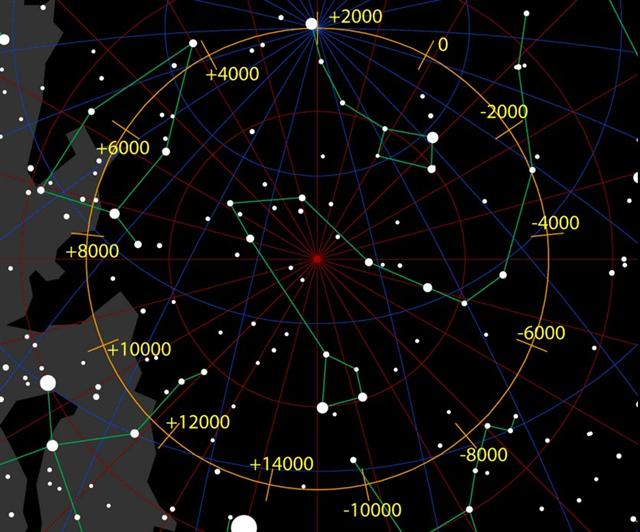
Polaris was less brilliant (1.97) and the
Star (Kakkab, Kochab, β Ursae
Minoris) which shone as North Pole at
the time of Bharani
 |
|
Cb1-15 |
|
e niu tu |
|
Niu.
Palm tree, coconut tree; hua niu,
coconut. Vanaga.
Coconut, palm,
spinning top. P Pau., Ta.:
niu,
coconut. Mgv.:
niu,
a top;
niu mea, coconut. Mq.:
niu,
coconut, a top. Churchill. The fruit
of
miro. Buck. T. 1. Coconut
palm. 2. Sign for peace. Henry. The
sense of top lies in the fact that
the bud end of a coconut shell is
used for spinning, both in the sport
of children and as a means of
applying to island life the
practical side of the doctrine of
chances. Thus it may be that in New
Zealand, in latitudes higher than
are grateful to the coconut, the
divination sense has persisted even
to different implements whereby the
arbitrament of fate may be declared.
Churchill 2. |
|
Nikau.
Mgv.: The coco palm.
Ta.:
niau, coconut leaf.
Ha.:
niau, stem of the
coconut leaf. Ma.:
nikau, an areca palm.
Churchill.
Mgv.: niu,
the coconut palm when young,
ripening into nikau.
... the ni of New Caledonia
leads us to infer that niu
was anciently a composite in which
ni carried at least some sort
of generic sense, it being
understood that
this
refers to those characteristics
which might strike the islanders as
indicating a genus. In composition
with kau tree we should then
see nikau, the ni-tree,
serving in Mangareva for the
coconut
palm, in New Zealand for the
characteristic palm (Areca sapida)
of that land, in Tahiti as niau
for coconut leaf, and as niau
in Hawaii for the leaf stalk of the
coconut. The ni-form is found
in Micronesia, and in the Marshall
Islands ni is the coconut.
Churchill 2. |
was also (2.07) inferior to Vega. Although
the light intensity of stars changed over time
and we cannot know for sure what anciently the
relations were between Vega and the other stars
in the northern cap.
 -
-
At the time of rongoronogo Thuban (α
Draconis), which the pyramid of Khufu
pointed out,
... The star [Thuban] could
be seen, both by day and night, from the
bottom of the central passage of the Great
Pyramid of Cheops (Knum Khufu) at
Ghizeh, in 30°
of north latitude, as also from the similar
points in five other like structures; and
the same fact is asserted by Sir John
Herschel as to the two pyramids at Abousseir
...
was even less bright (3.67),
but occupied (like Polaris) a significant place:
The south pole cap had the outstanding
Canopus (-0.72) which together with Vega
around half the right ascension cycle away would
have formed a formidable pair:
Glyph 396 in the G text was 365 right
ascension days after number 31, but should be quite different in
character because the cycle of the Sun would
here have been in the past and Canopus was
here neither in St
John's Day nor at Christmas Eve:
|
16 (471) |
APRIL 17 (107) |
18 |
19 |
20 (*30) |
21 (*95 - *64) |
 |
 |
 |
 |
 |
 |
|
Ga1-26 |
Ga1-27 |
Ga1-28 |
Ga1-29 |
Ga1-30 |
Ga2-1 (31) |
| |
6h (91.3)
ν Orionis (91.4), θ Columbae
(91.5), π Columbae (91.6) |
ξ Orionis (92.5) |
Al Han'ah-4 (Brand) /
Maru-sha-pu-u-mash-mashu-7
(Front of the Mouth of the
Twins)
TEJAT PRIOR = η Gemini
(93.4), γ Monocerotis (93.5), κ
Aurigae (93.6), κ Columbae
(93.8) |
FURUD = ζ Canis Majoris
(94.9) |
Well-22 (Tapir) /
Arkū-sha-pu-u-mash-mashu-8 (Back
of the Mouth of the Twins)
δ Columbae (95.2),
TEJAT POSTERIOR = μ Gemini,
MIRZAM (The Roarer) = β Canis
Majoris
(95.4),
CANOPUS = α Carinae
(95.6), ε Monocerotis (95.7), ψ1
Aurigae (95.9) |
|
June 19 (*90) |
SOLSTICE |
23 (174) |
ST JOHN'S DAY |
|
°June 15 |
16 |
17 (168) |
18 |
19 |
20 (*91) |
|
10 April |
11 |
12 |
13 |
4-14 (104) |
(*25 = *95 - *70) |
|
... Furud
is either from Al
Furud,
the Bright Single Ones, or,
perhaps by a transcriber's
error, from Al Kurūd,
the Apes, referring to the
surrounding small stars with
some of those of Columba; Ideler
thought the latter derivation
more probable. Al Sufi mentioned
them as Al Agribah,
the Ravens
...
Murzim [β
Canis Majoris], generally but
less correctly Mirzam,
and occasionally Mirza,
is from Al Murzim, the
Announcer², often combined by
the Arabs with
β
Canis Minoris in the plural
Al Mirzamāni, or as Al
Mirzamā al Shi'rayain,
the two Sirian Announcers;
Ideler's idea of the
applicability of this title
being that this star announced
the immediate rising of the
still brighter Sirius. ²
Literally the Roarer, and so
another of the many words in the
Arabic tongue for the lion, of
which that people boasted of
having four hundred ... |
|
Dec 19 (*273) |
SOLSTICE |
Dec 23 (357) |
X-MAS EVE |
 |
 |
 |
 |
 |
 |
|
Gb6-11
(28 + 365) |
Gb6-12 |
Gb6-13 |
Gb6-14 (396) |
Gb6-15 (168) |
Gb6-16 (398) |
|
16 Febr |
17 |
18 (414) |
CANOPUS |
20 |
21 (52) |
Possibly the extraordinary
figure in Gb6-14 - which seems to recycle
itself 2 days later - refers to Lord Makemake
(te Atua ko Makemake):

... Les
Mahigo (enfants) et les petites
calebasses sont ici réunis. Dans leurs
prières, en demandant à Makémaké de
petits calebasses, c'étaient surtout des
enfants qu'ils désignaient par ce mot
...
... Skulls with incised carvings, imbued
with power by Makemake, were placed
in the fowl house to promote the egg-laying
capacity of the occupants. It may seem a
long call from the domestic fowl to the
sooty tern, but both are birds and lay eggs.
The sooty tern (manu tara) comes to
breed in large numbers in July or August off
the southwestern point formed by the crater
of Rano-kao on three rocky islets, of
which the only one accessible to swimmers is
Motu-nui...
... Only vague memories
remain today of Tiki Makemake, Tiki Te
Hatu, Tiki Hati. It is said that the
main one was Tiki Makemake and that
Tiki Hati was the chief of a band of
ákuáku ...
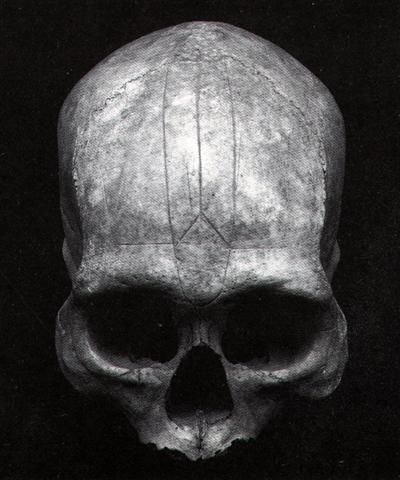
From heliacal Canopus to
nakshatra Vega there were only 3 days -
although such descriptions as heliacal and
nakshatra were quite misleading when stars close to
the pole were discussed.
|
63 |
zero |
229 |
169 |
22 Febr (2-22) |
23 (Terminalia) |
24
(Bissextum) |
25 (421) |
6 |
|
... The leap day was
introduced as part of the
Julian reform. The day
following the Terminalia
(February 23) was
doubled, forming the
'bis sextum -
literally 'double sixth',
since February 24 was 'the
sixth day before the Kalends
of March' using Roman
inclusive counting (March 1
was the 'first day').
Although exceptions exist,
the first day of the bis
sextum (February 24) was
usually regarded as the
intercalated or 'bissextile'
day since the third century.
February 29 came to be
regarded as the leap day
when the Roman system of
numbering days was replaced
by sequential numbering in
the late Middle Ages ...
|
 |
 |
 |
 |
|
Gb6-17 (229 + 170) |
Gb6-18 → 108 |
Gb6-19 (401) |
Gb6-20 (472 - 70) |
|
no star listed (98) |
ν Puppis (99.2), ψ3 Aurigae
(99.4), ψ2 Aurigae (99.5)
GEMMA
(α Cor. Bor.) |
ψ4 Aurigae (100.5),
MEBSUTA
(Outstretched) = ε Gemini
(100.7) |
SIRIUS
= α Canis Majoris
(101.2), ψ5 Aurigae (101.4),
ν Gemini (101.6), ψ6 Aurigae
(101.7) |
|
June 27 |
28 |
29 (180) |
30 (*107 - *6) |
|
Abhijit-22 (Victorious)
θ Cor. Austr. (281.0),
VEGA
= α Lyrae
(281.8) |
no star listed (282) |
ζ Pavonis (283.4), λ Cor.
Austr. (283.6),
DOUBLE DOUBLE
= ε Lyrae
(283.7), ζ Lyrae
(283.8) |
South Dipper-8 (Unicorn)
Φ SAGITTARII
(284.0), μ Cor. Austr.
(284.6), η Cor. Austr., θ
Pavonis (284.8) |
|
64 |
398 |
Dec 27 (361 = 19 * 19) |
12-28 → 336 |
29 → 348 |
30 (364 = 421 - 57) |
|
462 = 542 - 80 |
463 |
542 - 70 - 8 |
465 |
466 = 64 + 402 |
|
472 (= 1½ * 314 + 1) = 8 *
59 (= 413 + 2 * 29½) = 408 +
64 |
|
...
Easter Island (te pito o
te kainga) is the last
of all known islands. Seven
lands lie before it, but
these do not recommend
themselves for settlement.
Easter Island is the 'eighth
land' (te varu kainga).
Actually, we are dealing
here with a figure of speech
because 'seven' and 'eight'
used as qualifying
quantities play a
traditional role in Oceania
(Barthel 1962a). While the
number seven is known as a
topos in MQS., HAW., and
MAO., the topos of the
number eight goes far beyond
eastern Polynesia (MQS.,
HAW., TAH.). In TON., the
number eight is 'a
conventional term signifying
many or a well-balanced
number' (McKern 1929:17),
and on Malaita in the
southern Solomon Islands,
the physical world in its
entirety is referred to as
'eight islands (wālu
malau) (Ivens 1927:400).
The number eight not only
means 'many' but also
denotes perfection. Thus,
when Easter Island was
called 'an eighth land', the
expression contained first
of all the idea of a 'last'
island - an island farthest
away from the rest of the
islands that make up the
oceanic world. At the same
time, the expression
indicated a special position
among the other islands. The
idea of groups of seven,
which are surpassed by an
eight element, seems to
belong to the cosmology of
Asian high cultures. For
example, there are seven
planets circling the world
axis, which represents the
eighth, and therefore
central, position ... |
The date for the
Julian equinox (March 25, 3-25)
could have been chosen with
heliacal Canopus in mind, because
*95 - (March 25 - 0h) = 91:
|
3-25 |
*4 |
*364 / 4 |
NAKSHATRA ACRUX (80 + 4 + 183 = 267) |
|
6-24 |
*95 |
HELIACAL
CANOPUS (175 = 80 + 4 + 91) |
And Acrux
(*187) - *52 = *135 at the right uplifted
front paw of Itzam-Yeh (Ursa Major)
would have been at the end of the year at the time
of Bharani:
|
52 |
260 = 5 * 52 |
52 |
|
364 = 4 * 91 = 7 * 52 |

|
MAY 29 |
30 |
31 (151) |
JUNE 1 |
2 (*73) |
3 |
4 |
 |
 |
 |
 |
 |
 |
 |
|
Ga3-10 |
Ga3-11 |
Ga3-12 |
Ga3-13 (72) |
Ga3-14 |
Ga3-15 |
Ga3-16 |
|
γ Pyxidis
(133.6) |
ζ Hydrae
(134.1), ρ Cancri (134.2), ζ
Oct. (134.3), ο Cancri (134.6),
δ Pyxidis
(134.9) |
ACUBENS = α Cancri,
TALITHA BOREALIS = ι Ursae
Majoris
(135.0), σ Cancri (135.2), ρ
Ursa Majoris (135.6) |
ν Cancri (136.0),
TALITHA AUSTRALIS = κ Ursae
Majoris
(136.1), ω Hydrae (136.8) |
9h (137.0)
σ¹ Ursa Majoris (137.0), κ
Cancri (137.3), τ Cancri
(137.4),
ALSUHAIL AL WAZN (of the weight) = λ Velorum
(137.5), σ² Ursa Majoris
(137.6), τ Ursa Majoris (137.7),
ξ Cancri (137.8) |
κ Pyxidis (138.0), ε Pyxidis
(138.5) |
π Cancri (139.2),
MIAPLACIDUS = β Carinae
(139.3),
TUREIS = ι Carinae
(139.8) |
|
Aug 1 |
2 (214) |
3 (*500) |
4
(*136) |
5 |
6 |
7 |
|
°July 28 |
29 (*130) |
30 |
31 |
°Aug 1 |
2 (214) |
3 |
|
'July 5 |
6 (*107) |
7 |
8 |
9 (190) |
10 |
11 |
|
SOLSTICE |
"June 22 (*93) |
23 |
ST JOHN'S DAY |
6-25
→ 25 * 25 |
26 (177) |
27 |
|
NAKSHATRA DATES: |
|
NOV 28 |
29 |
30 (*254) |
DEC 1 |
2 (336) |
3 |
4 |
|
μ
Aquarii (316.0) |
ε
Equulei (317.8) |
no
star listed (318) |
21h (319.6)
ARMUS = η Capricorni
(319.0),
DORSUM = θ Capricorni
(319.3),
TSOO = 24 Capricorni
(319.7) |
DRAMASA = σ Oct.,
χ Capricorni (320.0),
ν Aquarii (320.3), γ Equulei
(320.6), ο Pavonis (320.8) |
α
Oct. (321.5), δ Equulei (321.7),
φ Capricorni (321.8) |
KITALPHA = α Equulei
(322.0),
ALDERAMIN = α Cephei
(322.9) |
|
Jan 31 |
Febr 1 |
2 (398) |
3 |
4
(*320) |
5 (36) |
6 |
|
°Jan 27 |
28 |
29 (*314) |
30 |
31 (396) |
°Febr 1 |
2 |
|
'Jan 4 |
5 (*290) |
6 |
7 (372) |
8 |
9 |
10 |
|
SOLSTICE |
"Dec 22 |
23 |
X-MAS EVE |
(→ 625 - 325) |
26 (360) |
27 |
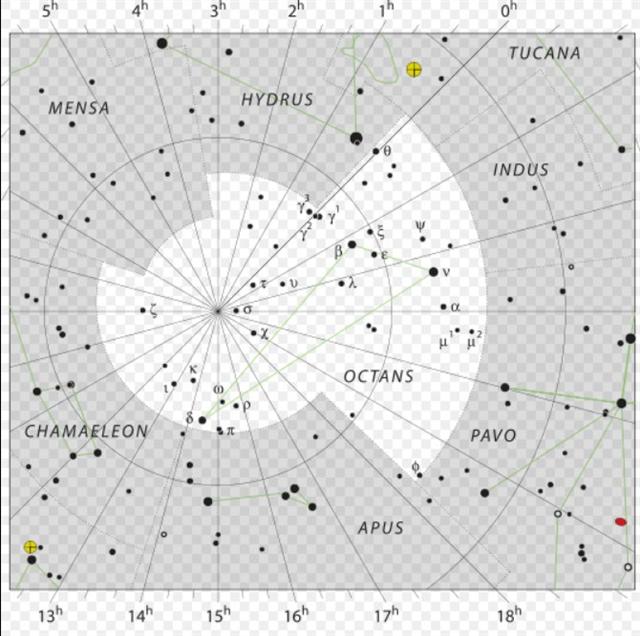
In
the C text, we have seen, the prow of Argo Navis
ended 3 days after κ Ursae Majoris:
 |
106 |
 |
 |
 |
 |
 |
 |
|
*Ca14-29 (392) |
Cb5-13 (107) |
Cb5-14 (500) |
Cb5-15 |
Cb5-16 |
Cb5-17 |
Cb5-18 (112) |
|
te rima |
te moa |
te maitaki |
te henua |
e gagata
tu |
ki te
huaga |
koia ra
kua mau ki toona mea |
|
April 16 (106) |
Aug 2 (214) |
3 |
4 (12 * 18) |
5 |
6 |
7 (149 + 70) |
|
5 Febr (36) |
24 May (12 * 12) |
25 (290 / 12) |
26 |
27 |
28 |
29 (*79 + 70) |
|
ANA-NIA-10
(Pillar-to-fish by)
χ Ceti (26.1),
POLARIS
= α Ursae Minoris,
BATEN KAITOS = ζ Ceti (26.6),
METALLAH = α Trianguli
(26.9) |
107 |
ζ Hydrae (134.1), ρ Cancri
(134.2), ζ Oct. (134.3), ο
Cancri (134.6), δ Pyxidis
(134.9) |
ACUBENS = α Cancri, TALITHA
BOREALIS = ι Ursae Majoris
(135.0),
σ Cancri (135.2), ρ Ursa
Majoris (135.6) |
ν Cancri (136.0),
TALITHA AUSTRALIS = κ Ursae
Majoris
(136.1), ω Hydrae (136.8) |
9h (137.0)
σ¹ Ursa Majoris (137.0), κ
Cancri (137.3), τ Cancri
(137.4),
ALSUHAIL (al Wazn) = λ
Velorum
(137.5), σ² Ursa Majoris
(137.6), τ Ursa Majoris
(137.7), ξ Cancri (137.8) |
κ Pyxidis (138.0), ε Pyxidis
(138.5) |
π Cancri (139.2),
MIAPLACIDUS
= β Carinae
(139.3),
TUREIS = ι Carinae
(139.8) |
|
The measure *137 (9h) - *26
(Polaris) = *111 right
ascension days is 1 more
than the number of days, 110
(= 217 - 106), because the
right ascension year
measures *365¼ and the
calendar year 365. |
.jpg) |
|
... Robur Carolinum,
Charles' Oak, the
Quercia of Italy and the
Karlseiche of
Germany, was formally
published by Halley in 1679
in commemoration of the
Royal Oak of his patron,
Charles II, in which the
king had lain hidden for
twenty-four hours after his
defeat by Cromwell in the
battle of Worcester, on the
3rd of September 1651
... |
|
Egyptian hand |
 |
Phoenician kaph |
 |
Greek
kappa |
Κ
(κ) |
|
Kaph is thought
to have been derived
from a pictogram of
a hand (in both
modern Arabic and
modern Hebrew,
kaph means
palm/grip) ...
... The manik,
with the tzab,
or serpent's rattles
as prefix, runs
across Madrid tz. 22
, the figures in the
pictures all holding
the rattle; it runs
across the hunting
scenes of Madrid tz.
61, 62, and finally
appears in all four
clauses of tz. 175,
the so-called
'baptism' tzolkin.
It seems impossible,
with all this, to
avoid assigning the
value of grasping or
receiving. But in
the final
confirmation, we
have the direct
evidence of the
signs for East and
West. For the East
we have the glyph
Ahau-Kin, the
Lord Sun, the Lord
of Day; for the West
we have Manik-Kin,
exactly
corresponding to the
term Chikin,
the biting or eating
of the Sun, seizing
it in the mouth.



The
pictures (from
Gates) show east,
north, west, and
south; respectively
(the lower two
glyphs) 'Lord' (Ahau)
and 'grasp' (Manik).
Manik was the
7th day sign of the
20 and Ahau
the last
... |
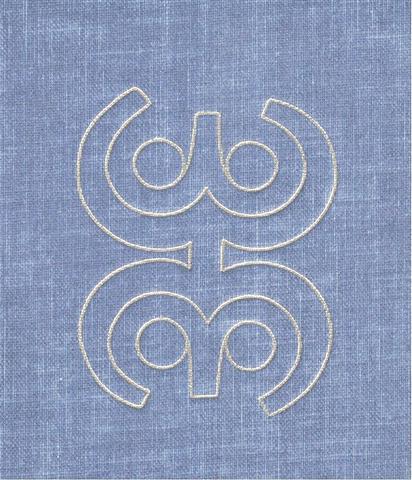
|

 -
- 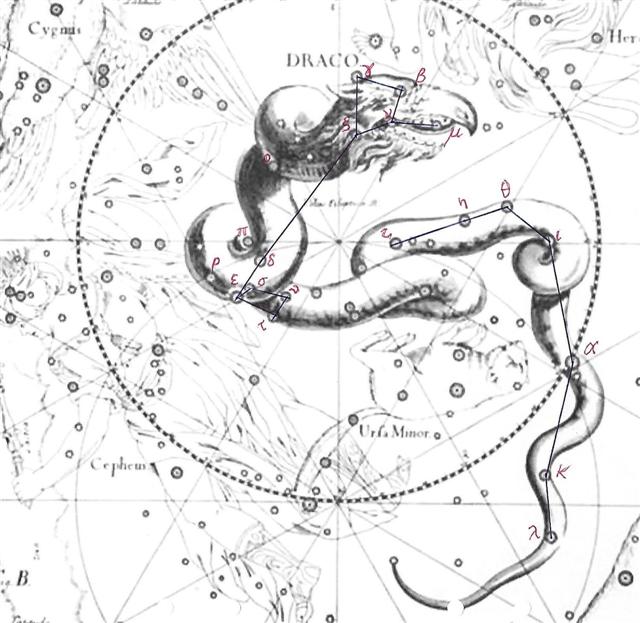

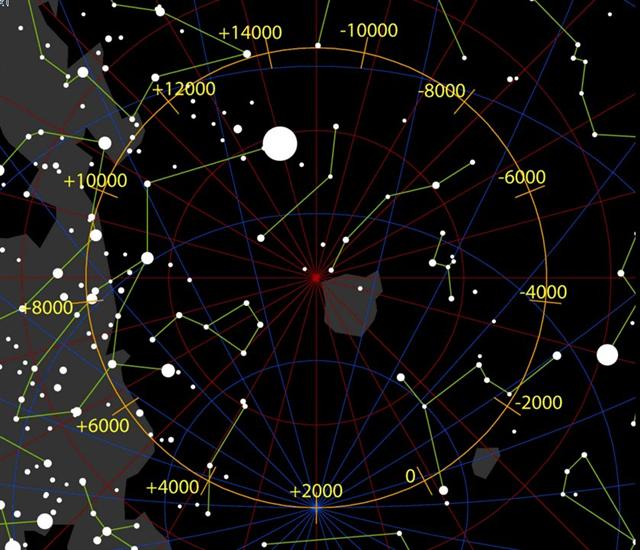
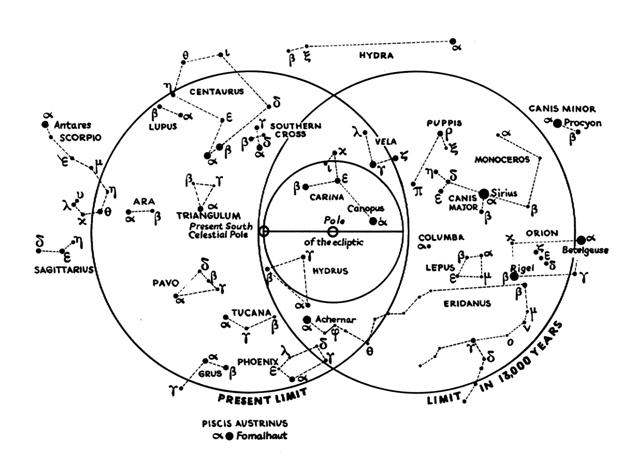




















.jpg)

